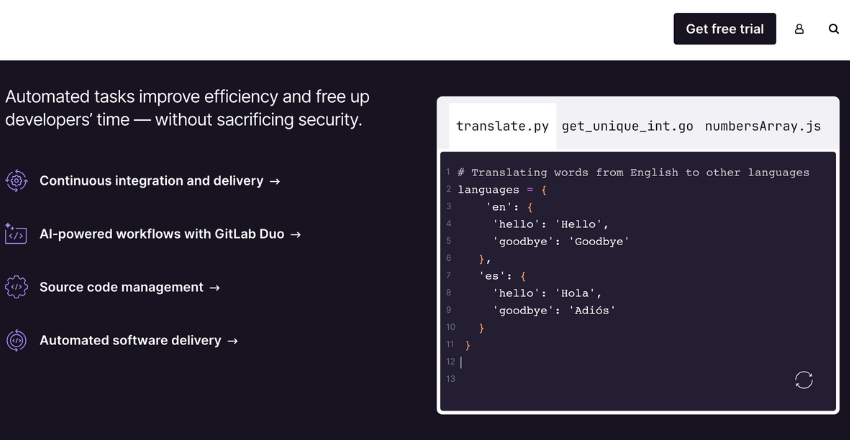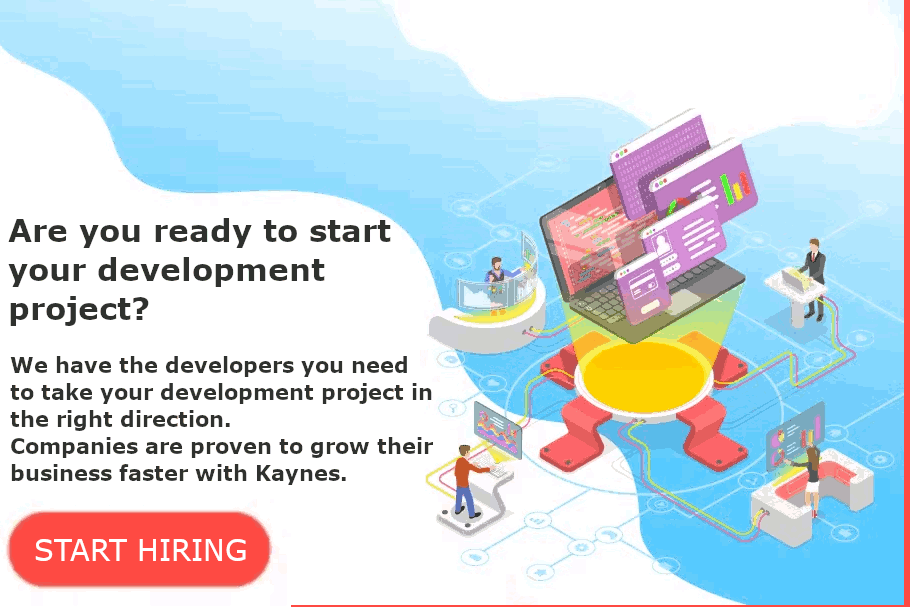
Streamlining Web App Development Process
Adding layers of complexity to web app development doesn’t necessarily lead to better results.
Thank you for reading this post, don't forget to subscribe!I’ve encountered many projects where this approach only caused confusion, making the development process longer and harder.
I’ve found the antidote: simplifying the process, focusing on core functionalities, and using a modular approach. This way, you’ll see an impressive increase in efficiency and quality.
Understanding project requirements is crucial for successful project execution. It involves comprehensively gathering and analyzing stakeholder needs and expectations, defining project scope, objectives, and deliverables. Open communication with all stakeholders is essential to ensure their requirements are fully understood and documented.
Consideration of project constraints and limitations, such as budget, timeline, and resources, is vital. A thorough understanding of project requirements facilitates effective planning and execution, helps set realistic expectations, and aids in managing potential risks throughout the project lifecycle. Conducting thorough research and analysis is necessary to identify the best approach and solution for meeting project requirements.
This may include data gathering, interviews, and feasibility studies to ensure the proposed solution aligns with stakeholder needs. A deep understanding of project requirements enables informed decision-making and the development of a successful project plan.

Choosing the Right Technology Stack
Choosing the right technology stack is crucial for the success of any software development project. The technology stack refers to the combination of programming languages, frameworks, libraries, and tools used to build and deploy a software application. It is important to carefully evaluate and select the technology stack based on the specific requirements and objectives of the project.
One of the key considerations when choosing a technology stack is to assess the scalability and performance of the technology components. This involves evaluating the ability of the technology stack to handle increasing workloads and user demands without compromising on speed and efficiency. It is important to choose technologies that can scale with the growth of the project and provide a seamless user experience.
Another important factor to consider when choosing a technology stack is the availability of skilled resources and support within the development community. It is essential to select technologies that have a strong community of developers and resources, as this can greatly impact the success and sustainability of the project. Additionally, considering the long-term support and maintenance of the chosen technologies is crucial for ensuring the longevity of the software application.
Furthermore, it is important to consider the compatibility and integration capabilities of the technology stack with other systems and platforms. Choosing technologies that can easily integrate with existing systems or third-party services can streamline development efforts and enhance the overall functionality of the software application. By carefully evaluating these factors, it becomes easier to choose a technology stack that aligns with the project requirements and sets the foundation for a successful development process.
Implementing Agile Development Methodology

Implementing an agile development methodology is essential for delivering high-quality software solutions in a dynamic and fast-paced environment. Agile methodologies emphasize iterative development, collaboration, flexibility, and customer feedback, which are crucial for adapting to changing requirements and delivering value to stakeholders. By implementing agile practices, development teams can respond quickly to market changes, reduce time-to-market, and improve overall project transparency.
One of the key principles of agile development is to prioritize customer satisfaction through continuous delivery of valuable software. This involves breaking down the project into smaller, manageable increments called iterations or sprints, which allows for frequent releases and feedback from stakeholders. By delivering working software in short cycles, agile teams can gather early feedback and make necessary adjustments to meet evolving customer needs.
Another important aspect of agile development is fostering collaboration and communication within cross-functional teams. Agile methodologies promote close collaboration between developers, testers, designers, and product owners, which helps in aligning everyone towards a common goal and ensures that all perspectives are considered during the development process. This collaborative approach fosters creativity, innovation, and shared ownership of the project’s success.
Furthermore, agile methodologies emphasize adaptability and flexibility in responding to changes throughout the project lifecycle. By embracing change and welcoming new requirements, agile teams can continuously improve and refine their software solutions to better meet customer needs. This iterative approach allows for greater flexibility in accommodating evolving market trends and customer preferences.
Utilizing Code Libraries and Frameworks
| Framework/Library | Benefits | Challenges |
|---|---|---|
| React | Component reusability, virtual DOM for performance | Steep learning curve for beginners |
| jQuery | DOM manipulation, event handling | Performance issues with large-scale applications |
| Bootstrap | Responsive design, pre-styled components | Overhead for unused components |
Utilizing code libraries and frameworks is essential for streamlining development efforts, improving code quality, and accelerating time-to-market for software applications. Code libraries provide reusable components, functions, and modules that can be leveraged across different projects to reduce redundant coding efforts and improve overall productivity. Frameworks, on the other hand, offer a structured foundation for building applications by providing pre-built components, design patterns, and best practices.
One of the key benefits of using code libraries and frameworks is the ability to leverage existing solutions and avoid reinventing the wheel. By utilizing well-established libraries and frameworks, developers can focus on implementing unique business logic and features without having to write boilerplate code from scratch. This not only saves time and effort but also ensures consistency and reliability across different parts of the application.
Furthermore, code libraries and frameworks often come with built-in security features, performance optimizations, and error handling mechanisms that can enhance the overall robustness of the software application. By leveraging these pre-built components, developers can mitigate common security vulnerabilities, improve application responsiveness, and handle edge cases more effectively. Additionally, using code libraries and frameworks can facilitate collaboration among development teams by providing standardized conventions and practices for building software applications.
This can improve code maintainability, readability, and reusability across different team members working on the same project. By following established patterns and guidelines provided by libraries and frameworks, developers can ensure a consistent coding style and architecture throughout the application.
Automating Testing and Deployment Processes

Automating testing and deployment processes is crucial for ensuring the reliability, stability, and efficiency of software applications. Automated testing allows for quick validation of code changes, identification of bugs or regressions, and verification of application functionality across different environments. Automated deployment streamlines the process of releasing new features or updates into production environments while minimizing human errors and downtime.
One of the key benefits of automating testing processes is the ability to run tests frequently and consistently without manual intervention. Automated tests can be integrated into continuous integration pipelines to validate code changes as soon as they are committed, which helps in identifying issues early in the development cycle. This proactive approach to testing can improve code quality, reduce technical debt, and increase overall confidence in the application’s stability.
Furthermore, automated testing enables developers to execute a wide range of test scenarios, including unit tests, integration tests, regression tests, performance tests, and security tests. By automating these tests, development teams can ensure comprehensive test coverage while saving time and effort compared to manual testing approaches. This allows for faster feedback on code quality and helps in identifying potential issues before they impact end-users.
In addition to automated testing, automating deployment processes can greatly improve the efficiency of releasing new features or updates into production environments. Automated deployment pipelines enable developers to package, build, test, and deploy applications with minimal human intervention, which reduces deployment errors and accelerates time-to-market. This streamlined approach to deployment also allows for easier rollbacks in case of issues or failures during deployment.
Collaborating with Cross-Functional Teams

Collaborating with cross-functional teams is essential for fostering a culture of shared responsibility, knowledge sharing, and collective ownership of project success. Cross-functional teams bring together individuals with diverse skills, expertise, and perspectives to work towards a common goal, which can lead to more innovative solutions and better outcomes for software development projects. One of the key benefits of collaborating with cross-functional teams is the ability to leverage different perspectives and expertise when solving complex problems or making critical decisions.
By bringing together individuals from different disciplines such as development, design, testing, product management, and operations, teams can gain a holistic understanding of project requirements and develop more comprehensive solutions that address various aspects of the application. Furthermore, collaborating with cross-functional teams promotes a culture of continuous learning and skill development among team members. By working closely with individuals from different backgrounds, team members have opportunities to learn new techniques, best practices, and approaches that can enhance their own skill sets.
This collaborative environment fosters personal growth and professional development while promoting a culture of knowledge sharing within the organization. Additionally, cross-functional collaboration encourages open communication, transparency, and accountability among team members. By breaking down silos between different departments or roles within an organization, teams can foster a sense of shared responsibility for project outcomes while promoting a culture of trust and respect.
This collaborative approach also helps in aligning everyone towards a common vision while promoting a sense of ownership over project deliverables.
Continuous Improvement and Optimization

Continuous improvement and optimization are essential for ensuring that software applications remain competitive, efficient, and relevant in today’s rapidly evolving market landscape. By embracing a mindset of continuous improvement, development teams can identify areas for enhancement, refine existing processes, and adapt to changing customer needs or market trends. One of the key principles of continuous improvement is to gather feedback from stakeholders regularly and use that feedback to drive iterative enhancements to the software application.
By soliciting input from end-users, product owners, business stakeholders, or internal teams, development teams can gain valuable insights into areas for improvement or new features that can add value to the application. This feedback-driven approach ensures that software solutions remain aligned with customer expectations while addressing emerging needs. Furthermore, continuous optimization involves identifying performance bottlenecks, inefficiencies, or technical debt within the application’s codebase or infrastructure.
By conducting regular code reviews, performance profiling, or architectural assessments, development teams can identify opportunities for optimization that can improve application responsiveness, scalability, or maintainability. This proactive approach to optimization helps in mitigating technical risks while ensuring that applications remain performant under increasing workloads. In addition to technical optimization, continuous improvement also involves refining development processes through retrospectives, post-mortems, or regular process audits.
By reflecting on past experiences and identifying areas for improvement in team dynamics, communication practices, or workflow efficiency, development teams can streamline their processes while fostering a culture of continuous learning and adaptation. In conclusion, understanding project requirements is crucial for setting clear objectives and managing stakeholder expectations throughout the project lifecycle. Choosing the right technology stack lays a strong foundation for building scalable and efficient software applications that meet specific business needs.
Implementing agile development methodologies fosters collaboration among cross-functional teams while enabling adaptability in responding to changing requirements. Utilizing code libraries and frameworks streamlines development efforts while ensuring consistency in coding practices. Automating testing and deployment processes improves overall application reliability while accelerating time-to-market.
Collaborating with cross-functional teams fosters a culture of shared responsibility while promoting knowledge sharing within an organization. Continuous improvement and optimization ensure that software applications remain competitive while addressing evolving customer needs.



